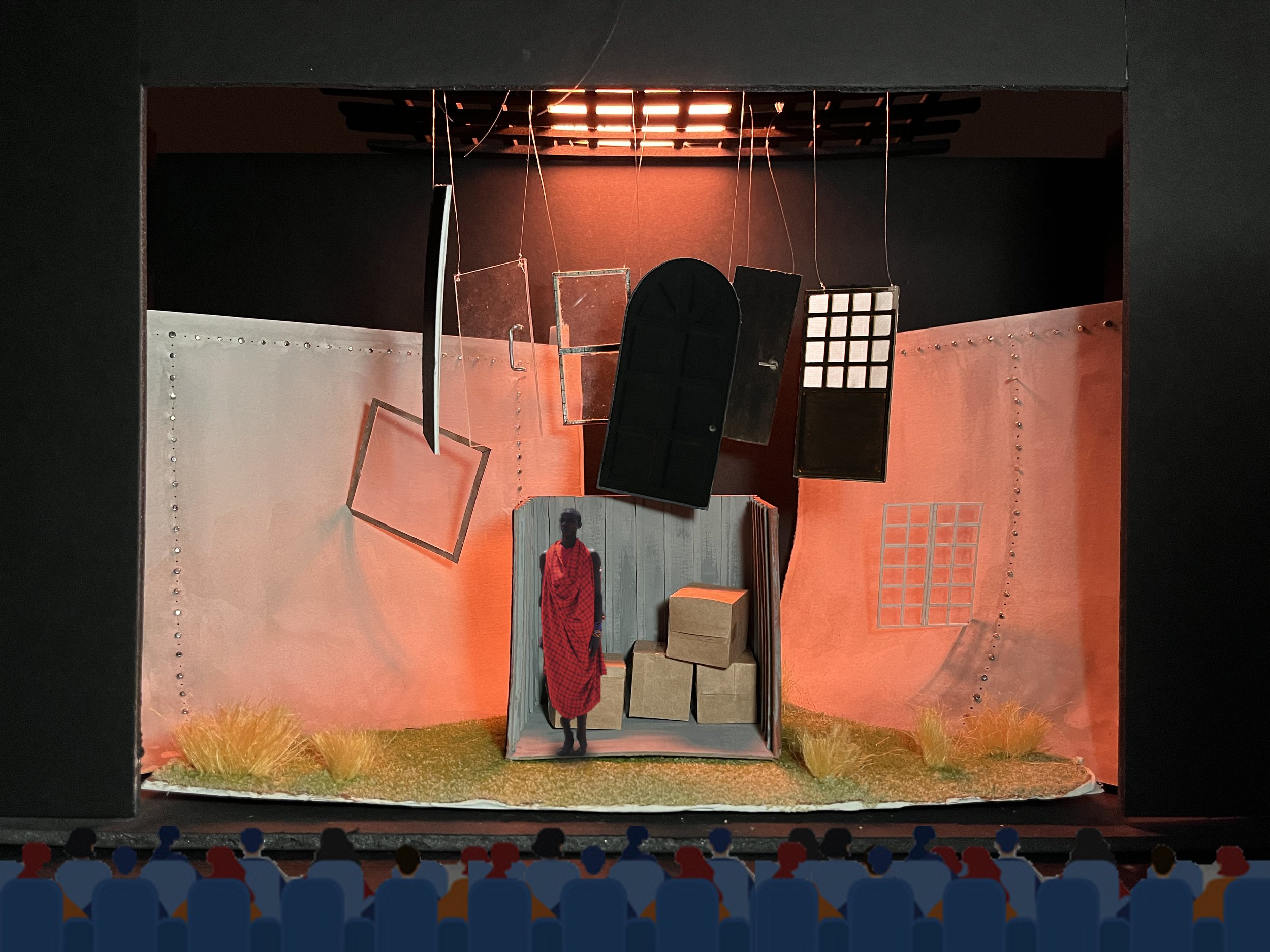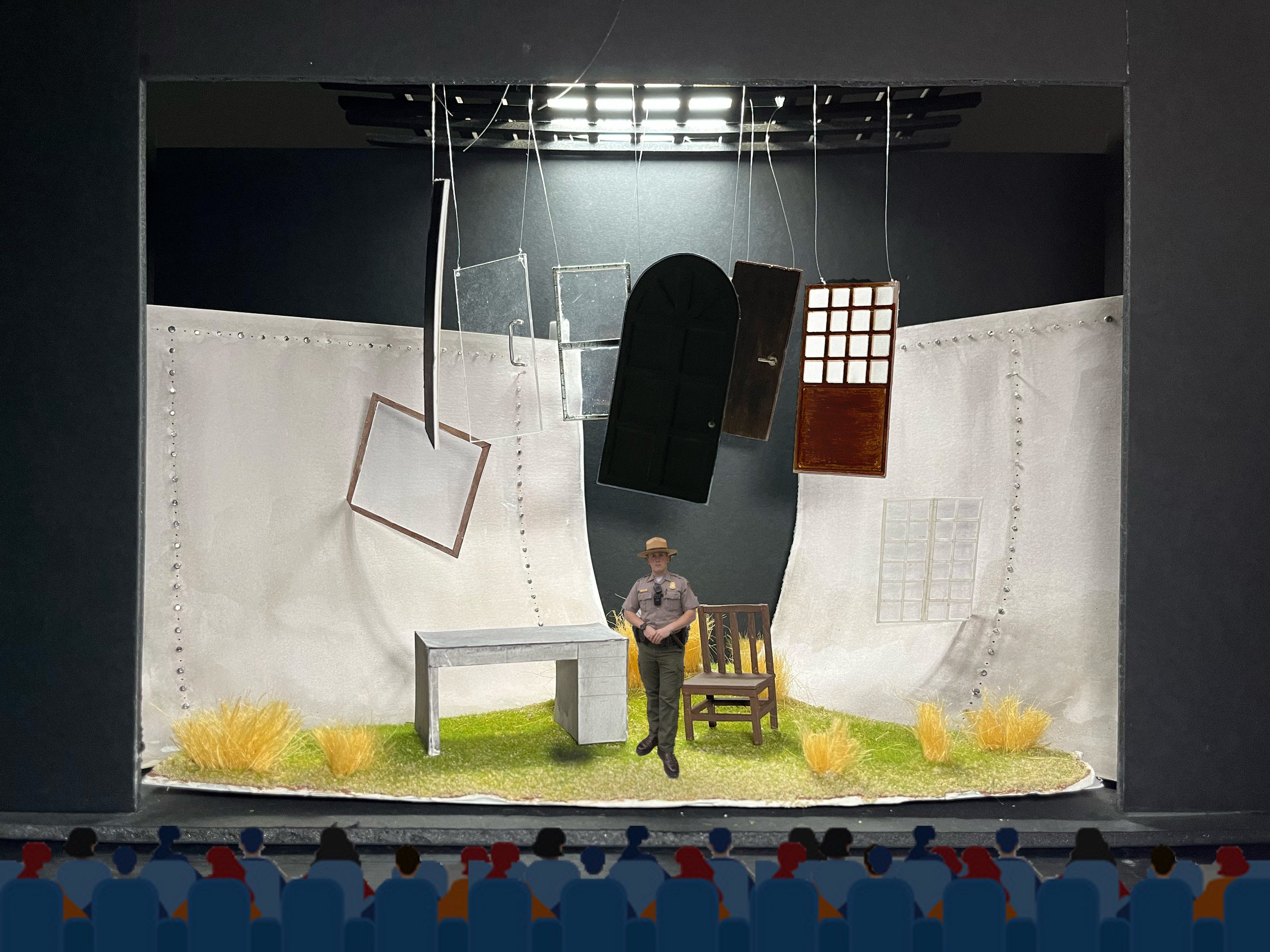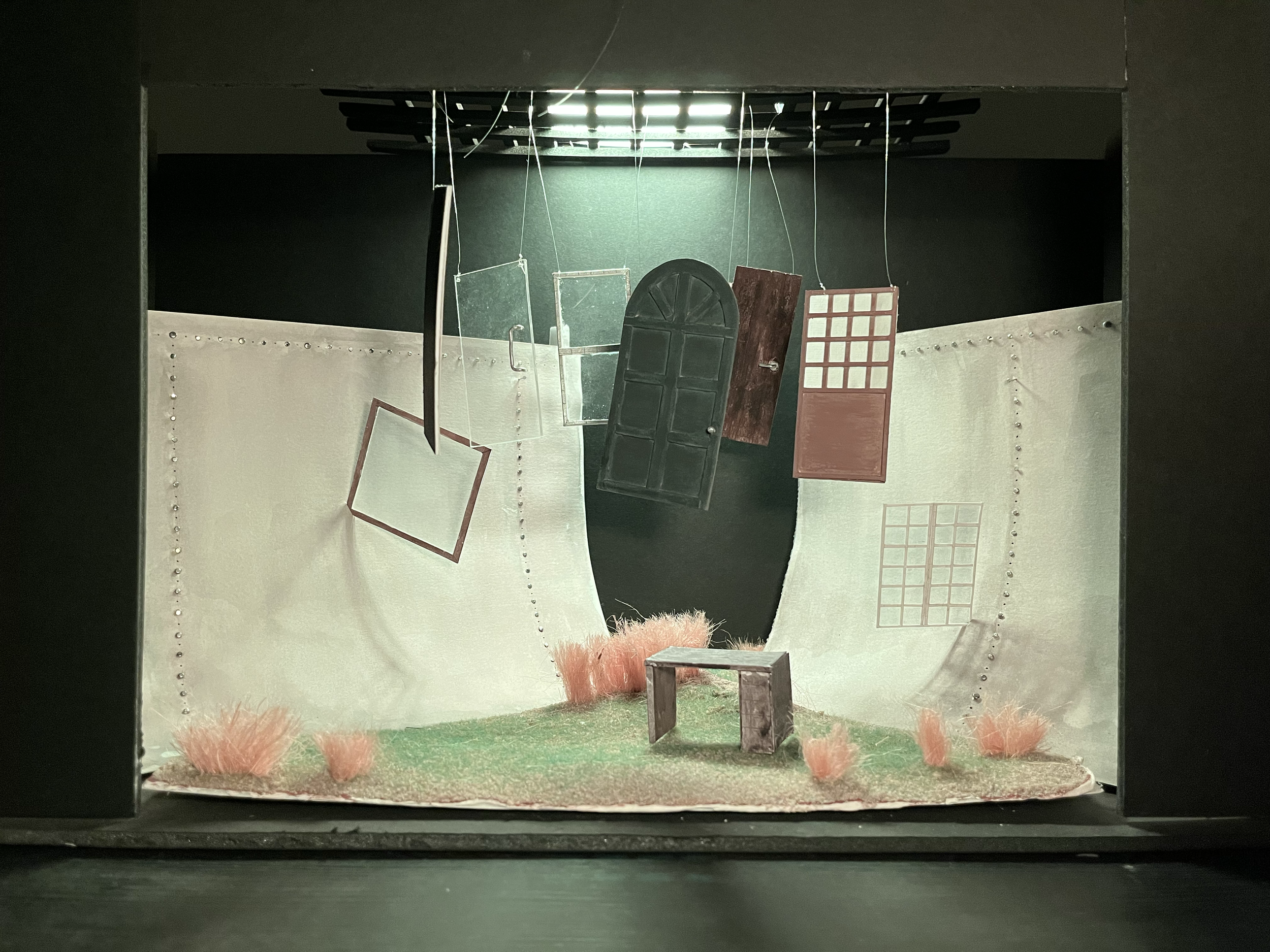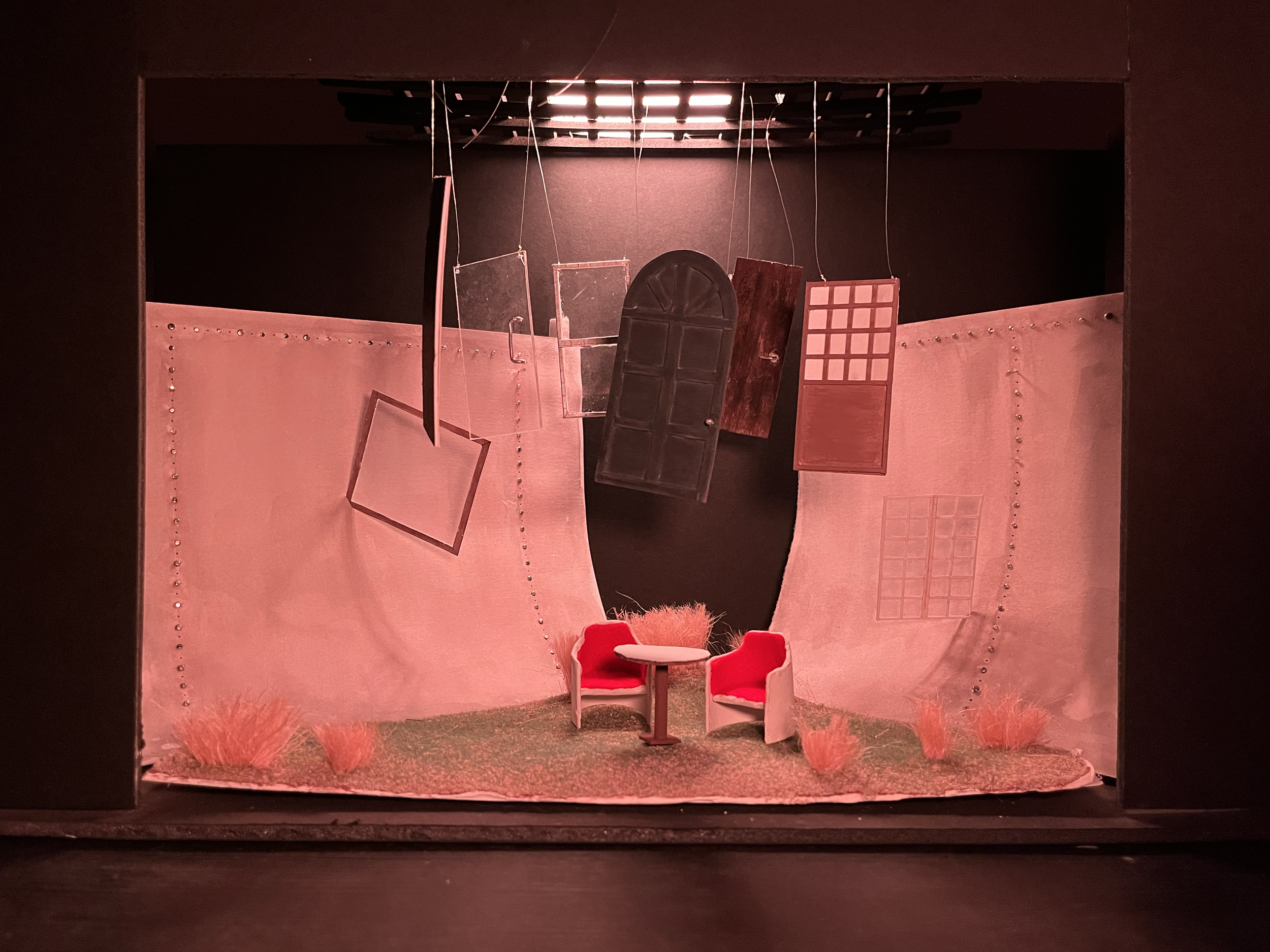
“Mlima’s tale” follows the journey of the last “tusk” on the grassland after its ivory is poached through 16 changing scenes. The design of this scene is transformed by different doors and props hanging from the top of the theater. From poachers, to government officials, to ivory carvers, he watches as capitalism, greed and corruption marks everyone in the ivory trade.

“Mlima’s tale” follows the journey of the last “tusk” on the grassland after its ivory is poached through 16 changing scenes. The design of this scene is transformed by different doors and props hanging from the top of the theater. From poachers, to government officials, to ivory carvers, he watches as capitalism, greed and corruption marks everyone in the ivory trade.

“Mlima’s tale” follows the journey of the last “tusk” on the grassland after its ivory is poached through 16 changing scenes. The design of this scene is transformed by different doors and props hanging from the top of the theater. From poachers, to government officials, to ivory carvers, he watches as capitalism, greed and corruption marks everyone in the ivory trade.

“Mlima’s tale” follows the journey of the last “tusk” on the grassland after its ivory is poached through 16 changing scenes. The design of this scene is transformed by different doors and props hanging from the top of the theater. From poachers, to government officials, to ivory carvers, he watches as capitalism, greed and corruption marks everyone in the ivory trade.

“Mlima’s tale” follows the journey of the last “tusk” on the grassland after its ivory is poached through 16 changing scenes. The design of this scene is transformed by different doors and props hanging from the top of the theater. From poachers, to government officials, to ivory carvers, he watches as capitalism, greed and corruption marks everyone in the ivory trade.